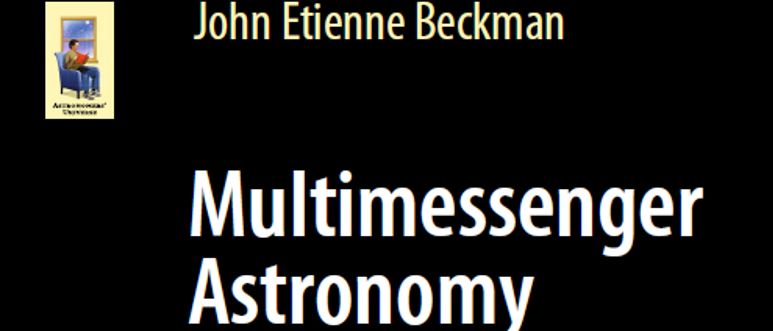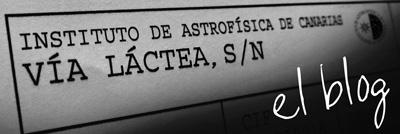En septiembre 2015 el experimento LIGO detectó por primera vez ondas gravitacionales causadas por la fusión de dos agujeros negros, cada uno de ellos con una masa de unas 30 veces la masa del Sol, a una distancia de unos mil cuatrocientos millones de años luz de la Tierra. La detección abrió una nueva era en la exploración del Universo, no solamente por lo que se descubrió, sino porque el método no usó ningún tipo de radiación electromagnética. Una gran parte de la información que los astrónomos y astrónomas reciben desde el cosmos llega a la Tierra mediante fotones, sean de luz visible, o de cualquier tipo de radiación electromagnética, desde las ondas radio, de muy bajas energías, hasta los rayos-gamma, de las energías más altas. En la prensa empezaron a aparecer referencias a “Multimessenger Astronomy” refiriéndose sobre todo al nuevo mensajero de las ondas gravitacionales. Algunos de los artículos que usaban esta frase también notaban que en los últimas tres décadas los astrofísicos y astrofísicas habían detectado partículas diminutas, los neutrinos, del Sol, y desde una supernova, que tampoco son ondas electromagnéticas.
Al concebir el libro que se presentará el 3 de diciembre, en el Museo de la Ciencia y el Cosmos (Museos de Tenerife), el autor consideró que usar la idea básica de multimensajería le daba la oportunidad de escribir sobre la Astronomía basada en las técnicas que hacen posibles los descubrimientos modernos. Para hacerlo tenía que ampliar el término, para incluir cada uno de los rangos de la radiación “tradicional”, y además dar cobertura amplia al tema de las ondas gravitacionales, por primera vez en un libro divulgativo. Pero se dio cuenta que hay dos materiales que se han estado utilizando durante un siglo para estudiar objetos fuera de la Tierra y que no son fotones: los rayos cósmicos (que no son rayos, sino partículas) y el material que nos llega en los meteoritos, aumentado por las rocas recuperadas de la Luna en el proyecto Apolo. Cada capítulo del libro, entonces, se enfoca en uno de los mensajeros, se describe un poquito de la historia de la técnica, los instrumentos desarrollados y algunos de los resultados más destacados. Eso da una perspectiva algo diferente a la de la mayoría de los libros de divulgación astronómica, que suelen describir los diferentes objetos y pueden dar ideas teóricas sobre ellos.
En su charla sobre el libro el autor presentará resúmenes de los capítulos en términos casi puramente pictóricos, sin entrar en las descripciones y explicaciones detalladas que se encuentran en el texto.
El Autor:
John Beckman es oriundo de Leeds, Inglaterra. Se graduó en Física teórica de la Universidad de Oxford, donde también obtuvo su doctorado en Astrofísica. Trabajó en los Estados Unidos, en Inglaterra y en la Agencia Espacial Europea, antes de llegar al Instituto de Astrofísica de Canarias en 1984, a la invitación del entonces director Francisco Sánchez Martínez para ser el primer Coordinador de Investigación del Instituto. Ha permanecido en el IAC desde entonces, como Profesor de Investigación del CSIC, hasta su jubilación formal en 2011. Actualmente continúa en este centro, como Profesor de Investigación Vinculado ad Honorem al CSIC, y como Profesor de Investigación de Honor del propio IAC. Entre las tesis doctorales que ha dirigido, se incluye la tesis del actual director del IAC, Rafael Rebolo López. John se nacionalizó español en 1991.
_
In September 2015 the LIGO experiment made the first detection of gravitational waves, which were produced by the merging of two black holes, each one with a mass 30 times that of the Sun, at a distance of some one thousand four hundred million light years from the Earth. The detection opened a new epoch in our exploration of the Universe, not only because of what it discovered, but because the method did not use any kind of electromagnetic radiation. The bulk of the information which astronomers receive from the cosmos arrives here via photons, which may be of visible light, or of any other type of radiation from radio waves, at the lowest energies, to gamma-rays at the highest energies. There began to appear in the media references to “Multimessenger Astronomy” referring above all to the new messenger of gravitational waves. Some of the articles which used this phrase also noted that in the past three decades astrophysicists have detected tiny particles, neutrinos, from the Sun and from a supernova, which are also not electromagnetic waves.
When he thought about writing the book which will be presented on December 3rd, the author considered that the basic idea of multimessages gave him an opportunity to write about astronomy in general based on the techniques which make modern discoveries possible. To do this he had to amplify the meaning of the term, to include all the ranges of “traditional” radiation, and also to give wide coverage to the topic of gravitational waves in an outreach book. But he realized that there are two subjects which have been used for a century to study objects outside the Earth, and which are not fotons: cosmic rays (which are not rays but particles) and the material which arrives on Earth in the form of meteorites, augmented by the rocks brought back from the Moon during the Apollo project. Each chapter of the book, then, is focused on one of these messengers; a little of the history of the technique is described, followed by the instruments developed, and some of the main results achieved. This gives a perspective rather different from the majority of outreach books on astronomy, which usually describe the different objects and give some theoretical ideas about them.
In his talk about the book the author will present summaries of the chapters in purely pictorial terms, without giving the detailed descriptions and explanations which can be found in the text
The Author:
John Beckman was born in Leeds, England. He graduated in theoretical physics from the University of Oxford, where he also obtained his doctorate in astrophysics. He worked in the United States, in England, and at the European Space Agency, before arriving at the Instituto de Astrofísica de Canarias in 1984, invited by the then Director of the Institute, Francisco Sánchez Martínez, to be the first Research Coordinator of the IAC. He has remained at the IAC ever since, as Research Professor of the CSIC, until his formal retirement in 2011. He has continued at the IAC since then, firstly as Honorary Reserach Professor of the CSIC, and then as Honorary Research Professor at the IAC. Among the doctoral theses he has supervised is that of the current Director of the IAC, Rafael Rebolo López. John became a Spanish citizen in 1991.


